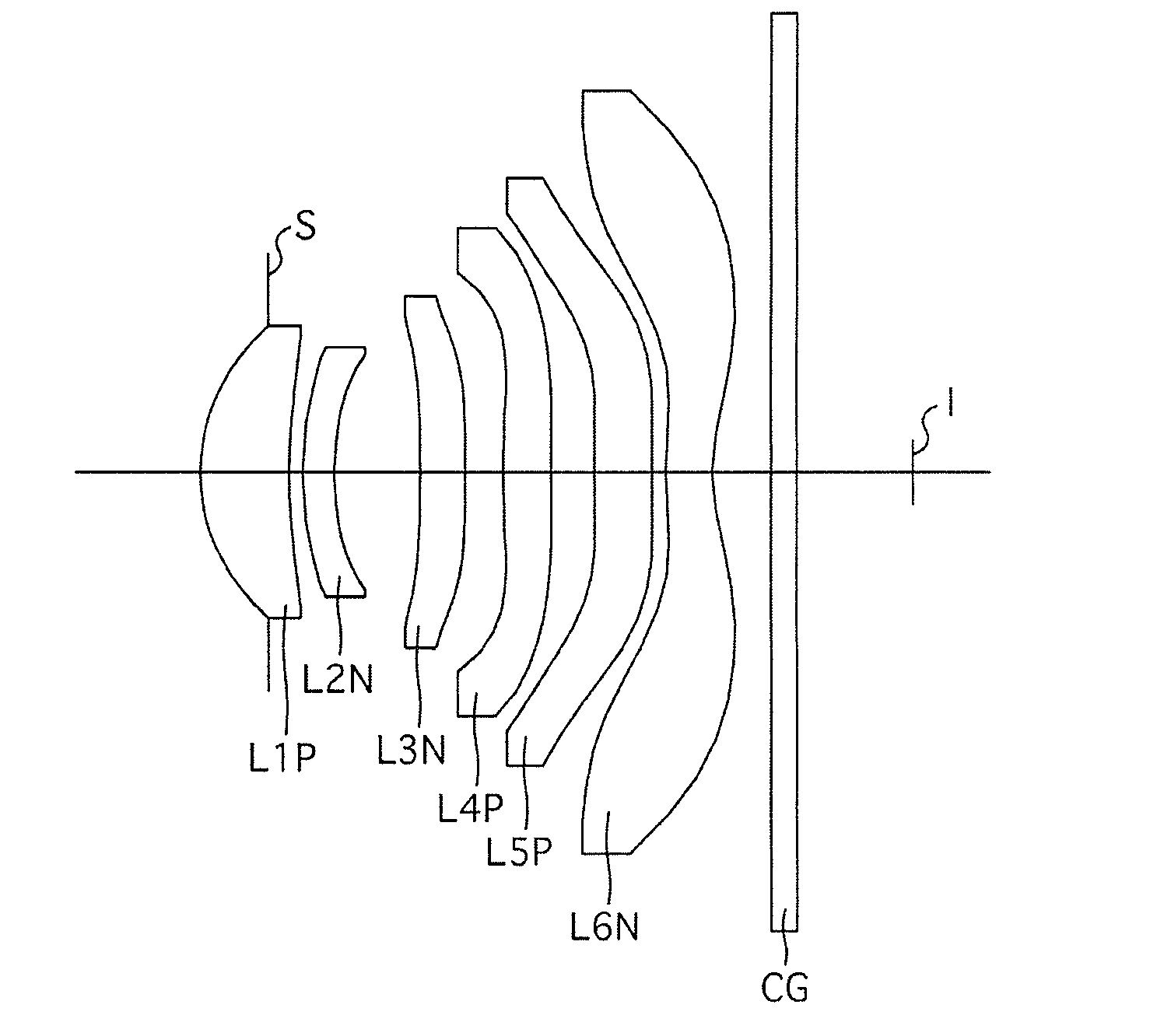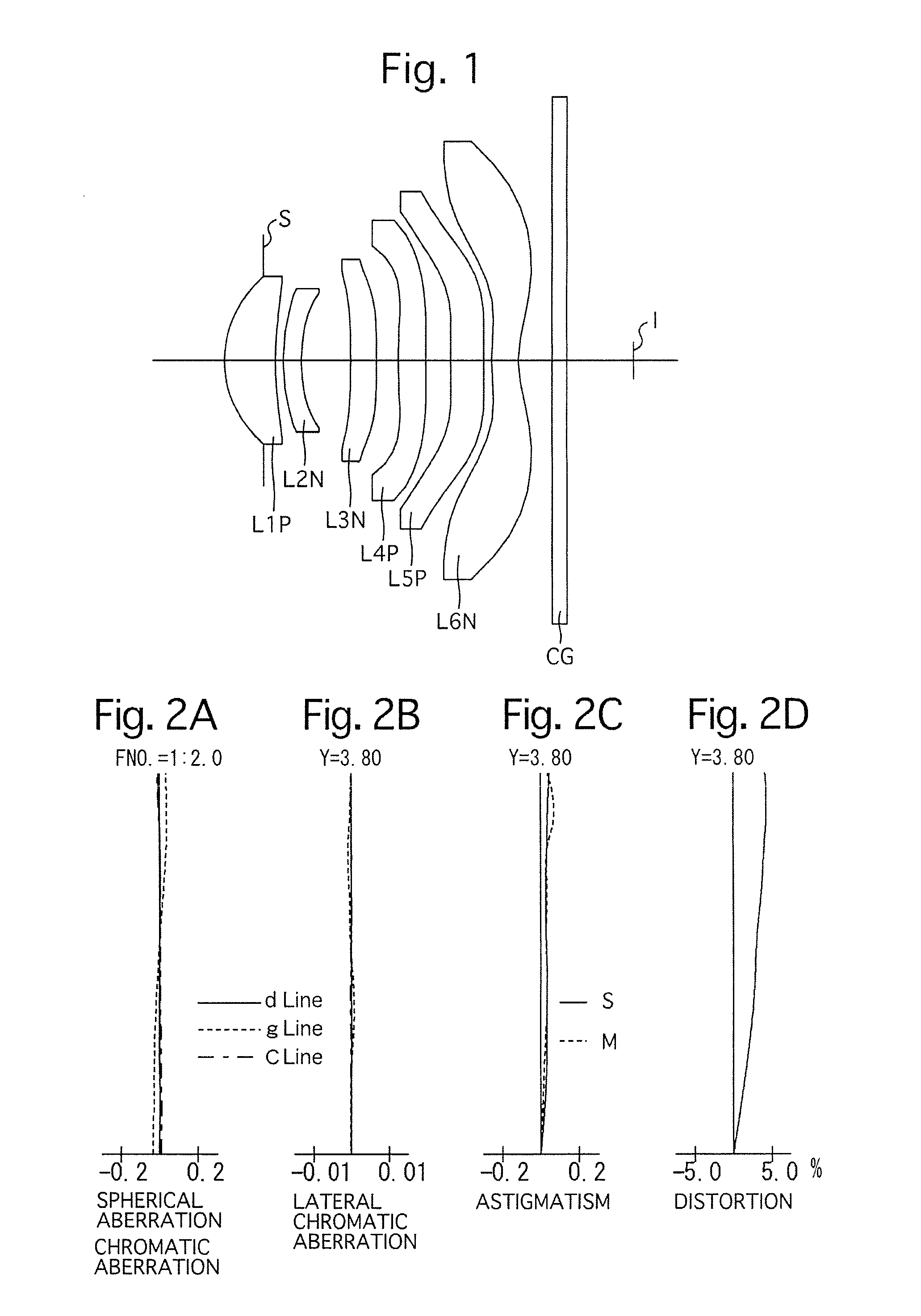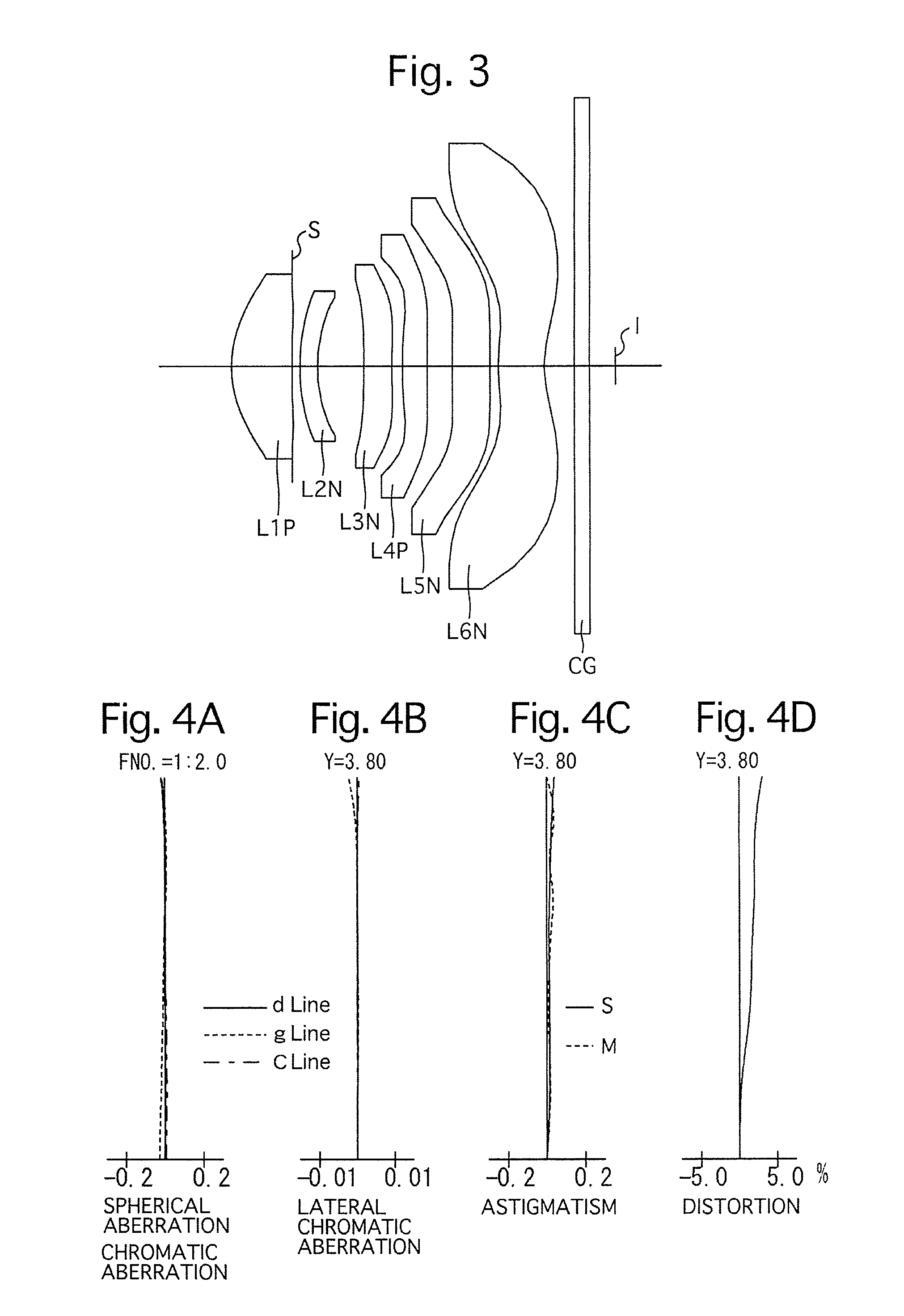Imaging optical system
a technology of optical system and image, applied in the field can solve the problems of difficult miniaturization (slimming down) of imaging optical system, large momentum of camera, and correction of abaxial aberration such as coma, etc., and achieve the effect of favorable correction of abaxial aberration
- Summary
- Abstract
- Description
- Claims
- Application Information
AI Technical Summary
Benefits of technology
Problems solved by technology
Method used
Image
Examples
numerical embodiment 1
[0082]FIGS. 1 through 2D and Tables 1 through 3 show a first numerical embodiment of the imaging optical system. FIG. 1 shows a lens arrangement of the first numerical embodiment of the imaging optical system. FIGS. 2A, 2B, 2C and 2D show various aberrations that occurred in the lens arrangement shown in FIG. 1. Table 1 shows the lens surface data, Table 2 shows various data of the imaging optical system, and Table 3 shows aspherical surface data.
[0083]The imaging optical system of the first numerical embodiment is configured of a positive first lens element L1P having a convex surface on the object side (a positive meniscus lens element having a convex surface on the object side), a negative second lens element L2N having a concave surface on the image side (negative meniscus lens element having a convex surface on the object side), a negative third lens element L3N, a positive fourth lens element L4P, a positive fifth lens element L5P and a negative sixth lens element L6N, in that...
numerical embodiment 2
[0084]FIGS. 3 through 4D and Tables 4 through 6 show a second numerical embodiment of the imaging optical system. FIG. 3 shows a lens arrangement of the second numerical embodiment of the imaging optical system. FIGS. 4A, 4B, 4C and 4D show various aberrations that occurred in the lens arrangement shown in FIG. 3. Table 4 shows the lens surface data, Table 5 shows various data of the imaging optical system, and Table 6 shows aspherical surface data.
[0085]The fundamental lens arrangement of the second numerical embodiment is the same as that of the first numerical embodiment except for the following features:
[0086](1) The positive fifth lens element L5P is replaced with a negative fifth lens element L5N.
[0087](2) The diaphragm S is provided on a plane that is orthogonal to the optical axis and contacts the surface of the first lens element L1P on the image side.
TABLE 4LENS SURFACE DATASurf. No.RDN(d)ν(d)11.7830.841.4971081.6210.2420.00(Diaphragm)∞0.1132.8170.252.0017819.342.2850.665−...
numerical embodiment 3
[0088]FIGS. 5 through 6D and Tables 7 through 9 show a third numerical embodiment of the imaging optical system. FIG. 5 shows a lens arrangement of the third numerical embodiment of the imaging optical system. FIGS. 6A, 6B, 6C and 6D show various aberrations that occurred in the lens arrangement shown in FIG. 5. Table 7 shows the lens surface data, Table 8 shows various data of the imaging optical system, and Table 9 shows aspherical surface data.
[0089]The fundamental lens arrangement of the third numerical embodiment is the same as that of the first numerical embodiment.
TABLE 7LENS SURFACE DATASurf. No.RDN(d)ν(d)(Diaphragm)∞−0.4411.4430.631.4971081.625.4690.1533.5500.222.0017819.342.7700.565−9.0910.421.5435855.76−13.4550.24711.8740.451.5435855.7875.7640.35945.9520.471.6354823.91073.2870.10112.6020.521.5435855.7121.4260.4413∞0.211.5168064.214∞0.34
TABLE 8IMAGING OPTICAL SYSTEM DATAFocal length of imaging optical system [mm]:4.60f-number2.2Half angle of view [deg]:38.2Maximum image he...
PUM
 Login to View More
Login to View More Abstract
Description
Claims
Application Information
 Login to View More
Login to View More - R&D
- Intellectual Property
- Life Sciences
- Materials
- Tech Scout
- Unparalleled Data Quality
- Higher Quality Content
- 60% Fewer Hallucinations
Browse by: Latest US Patents, China's latest patents, Technical Efficacy Thesaurus, Application Domain, Technology Topic, Popular Technical Reports.
© 2025 PatSnap. All rights reserved.Legal|Privacy policy|Modern Slavery Act Transparency Statement|Sitemap|About US| Contact US: help@patsnap.com



